Episode 13: From Stuffed Sharks to Data: The Evolution of Art Trade
From ancient artifacts to AI-curated collections, art is evolving fast. In this episode, host Anni explores how technology is transforming the art world, from online marketplaces to data-driven personalization and virtual galleries.
She’s joined by Doron Fagelson, SVP of Media & Entertainment at DataArt, who shares insights on the biggest shifts facing auction houses, galleries, and online platforms as younger, digital-native collectors reshape the landscape.
Whether you're a techie, collector, or just curious about the future of art, this one's for you.
Key Takeaways
✓ Historical Context: The art market has traditionally been relationship-driven, with collectors relying on personal connections with galleries, dealers, and advisors. Brand equity (auction houses, renowned artists, prestigious galleries) provided reassurance to insecure buyers in a market characterized by centralized trust and institutional authority.
✓ Current Landscape: A generational wealth transfer to millennials and Gen Z collectors is reshaping the art market. Online art sales now represent 16% of the global market ($11 billion in 2022). Digital transformation has created three distinct market segments: auction houses (secondary market), galleries/dealers (primary market), and online platforms (marketplaces and collection management tools).
✓ Anticipated Trends: Data-driven personalization will enhance collector experiences through AI-powered curation and recommendations. Immersive technologies like VR/AR will transform museum and gallery engagement. The trust model is shifting from centralized institutions to distributed communities, with collectors becoming more self-educated and less reliant on traditional art world gatekeepers.
Transcript
Anni Tabagua: Welcome to the new episode of BizTech Forward. I'm your host, Anni, and today's topic is as old as civilization itself: Art. But we are looking through a very modern lens. The way people buy, sell, and discover art has changed dramatically over recent years. Digital marketplaces are booming. Younger collectors are influencing the industry, and data plays a bigger role than ever. So, what does this really mean for auction houses, galleries, and online art platforms? To help us find answers to all these questions, I'm joined by Doron Fagelson, Senior Vice President of Media and Entertainment at DataArt. Hi Doron, welcome to the show.
Doron Fagelson: Hi, Anni. Thank you for having me.
Anni Tabagua: I'm really excited to introduce our guest today. Doron is the Senior Vice President of the Media and Entertainment practice at DataArt, having over 25 years of experience in the IT industry. Originally from London, now based in New York, Doron joined DataArt in 2015, and early in his career, he worked for fintech. But for the past seven years, he has focused on the media and entertainment industry, covering music, digital media, book publishing, video, sports, and, of course, the art trade, which is the focus of our discussion today.
So, Doron, again, welcome to the show. I'm so happy you're here. I want to start by painting the big picture. I want to understand who your clients are. So, who are the key players in the art trade today, and what are their biggest challenges? Maybe they are all united by some specific challenge, maybe not. Walk us through it a bit, if you will.
Doron Fagelson: Yes. Thank you. I'm happy to. So, for us, for DataArt, I would say that our clients in the art trade tend to fall into three buckets. The first one is auction houses. The auction houses are focused primarily on the secondary market. So that means trading and selling artworks that have already traded hands and have a history.
The second group would be art galleries and art dealers. They tend to represent artists and their new works and, hence, deal more in the primary market. The third area is online art platforms, apps, and tools. These include digital art marketplaces, such as Artsy, for example, and art collection management tools, used by galleries or sometimes even by private collectors.
So, those are distinct groups. And they do have somewhat different priorities. But I would say that all of them today are really looking at a similar challenge: How do they adapt? And how are they adapting to how people buy, sell, and manage their art collections today?
That has actually changed quite a lot, especially in the last few years, as more younger collectors have started to enter the market. There's actually been a wealth transfer from the more traditional art-collecting generation to a much younger cohort. So all of that is quite an interesting situation today for the art markets.
Anni Tabagua: Oh, that's really interesting. And just to clarify, when did that start to happen? The shift.
Doron Fagelson: I think the shift probably started happening in the last 5 to 10 years, particularly the last five years, and that also has definitely coincided with technology transformation in many industries, which is really now coming into the art trade in a very big way as well. And I think that the pandemic definitely accelerated that evolution.
It is so recent, given how old the art market is and how old some of the auction houses are, obviously dating back to the late 18th century.
Anni Tabagua: Exactly. So I bet this hasn't been easy for auction houses and for everyone, basically. But do you maybe have an example of a company that had to rethink the whole approach?
Doron Fagelson: Yes. I could give a couple of examples. A recent example of this trend of art businesses responding to these shifts in buying patterns and collectors' expectations was an art advisory firm. They became interested in developing a high-end art collection, management, and valuation app.
What I found particularly interesting was that the main impetus for this idea stemmed from the company's lack of digital offerings. Many of their client collectors are now younger and more tech-savvy, and they simply expect to be able to view, engage with, and manage their collection from an app or an online platform or channel, and interact with their advisors digitally.
So, this was an idea spawned from some of these transformations we've been seeing. Another example of players having to really rethink their business models because of those changes and how collectors' expectations are evolving is Sotheby's. In 2020, they introduced their Buy Now platform, which allows the immediate purchase of curated items and artworks at a fixed price outside of their typical auction calendar.
This marked a clear break from their past practice of only selling artworks at auction or through a private sale.
Anni Tabagua: Oh, so Sotheby's becoming like eBay?
Doron Fagelson: Well, I wouldn't say that they're becoming like eBay. I certainly don't think they characterize themselves that way. Still, they have changed their business model to provide an outlet for selling online and in-person auctions.
Anni Tabagua: Interesting. I'm also very intrigued by these young collectors. First of all, how young are we talking? What qualifies someone to be a young collector? Who are these people? I just want to understand.
Doron Fagelson: I think we're probably talking about the millennial and Gen Z collectors when we talk about young collectors. I think that's where we're seeing this sort of generational transfer of wealth as they inherit works and collections from their forebears. So they are now having a much bigger impact on the market in general because they're accounting for a bigger proportion of buyers and sellers today.
And I think they definitely have different expectations and even buying habits from the more traditional art buyers.
Anni Tabagua: That's a great bridge to what I really wanted to ask you. What makes them so different from traditional buyers? What do they bring?
Doron Fagelson: Maybe we could start by describing the more typical traditional buyer and the typical model that has often characterized this trade. The traditional model is very much more relationship-driven, I would say. Traditional collectors have tended to rely on personal relationships with art galleries, dealers, and advisors.
I would say the younger buyer is not as dependent in that same way. They're more digital first. They are definitely more comfortable making purchases of artwork online. And I think they also expect more data-driven recommendations because they're just so used to being more digitally engaged in their lives and using data in many of their different habits, workplace practices, and so on.
So they don't rely only on expert opinions. One piece of evidence of this is actually the 2024 Art Basel and UBS survey of global collecting, which Art Economics does. That survey found that it's often the case that an online art platform—and many of those art platforms do now incorporate recommendation engines—could be used as an initial way for discovering and sourcing new works and artists, even if ultimately the sale of an artwork might still be through a gallery or an auction house, or even directly with an artist. So it's interesting to see how digital tools are figuring into this discovery process much more today for this younger generation.
The report also found that when a collector is targeting a specific artwork for purchase, high-net-worth individuals, who tend to be at the top end of the buying market, have become much more comfortable purchasing the work online without even seeing it in person or actually visiting the gallery. It's quite striking.
The report notes that buying directly through a dealer's website was the second most used and most prevalent route for spending money on art through a dealer or gallery. But it was actually the most preferred one for the high-net-worth individual cohort in 2024. So I do think those trends show how this younger collector base is much more prominent and influential as a core demographic of buyers in the art market today.
Anni Tabagua: Wow. And you mentioned the digital tools and trends, and how technology plays a big role. And I want to stay here a little bit. So, would you walk us through the current main trends that stand out technology-wise? What are some of the biggest trends you can think of?
Doron Fagelson: Sure. So I think I would point to three broad ones that stand out. The first is the volume of online art sales. Today, it's no longer this sort of niche market or a very small sliver of the market. I think we're seeing collectors becoming more comfortable buying artwork online, both in volume and in terms of price.
Now you're starting to see really major works being sold digitally. Not just works below $50,000. For example, in 2022, online sales accounted for about 16% of all art sales worldwide. That was just under about 11 billion USD. So that is quite significant.
The other trend is AI-driven curation. Very recently, I think many personalization recommendation engines have leveraged AI, and those are definitely helping collectors find artworks that they love more conveniently and easily.
The last trend in terms of interesting technologies coming to the fore is immersive and interactive experiences. Particularly in the cultural sector, virtual galleries where you can access the works remotely and AI-powered museum guides are examples.
We are really starting to see a lot of those kinds of projects being implemented with great success. A recent example is the Smithsonian Art Museum. It recently partnered with Tulips AI to launch an AI-powered audio guide that offers AI-tailored content, data-driven curation, and enhanced accessibility.
That guide attracted about 35,000 users in just three months. That's a great indication of how technology is becoming a much more important driver of modern museum engagement today.
Anni Tabagua: Wow, that's so cool. I wonder if the Smithsonian Museum is the first one to do that, or will everybody else follow their lead, or did they copy someone else? I just wonder.
Doron Fagelson: I don't believe that they were the first. But I do know they've perhaps had the most success with it. And I certainly think that, given their name and brand, that makes a lot of waves. It certainly encourages other museums to follow suit, but I've definitely seen other examples as well in the last couple of years of this kind of AI-powered tool really helping museums engage their visitors better.
Anni Tabagua: Since we're discussing trends and technology, I can not mention data. Also, I must say that this episode for me is a bit like a dream come true because we both work at DataArt, and I've always wanted to just be like at some point, "Hey, we are from DataArt, and we're talking about data and art."
So finally, I said this sentence, and thank you for this, Doron. Now, jokes aside, data also seems to be a big force in the art industry. So, what are some of the biggest ways the industry is impacting? How? Why? What is happening data-wise?
Doron Fagelson: It's such an important question, Anni, and I think it justifies much attention and focus today. And I think art businesses are trying to think more about leveraging data as an asset. And I think two of the big ways it's certainly being implemented and leveraged are the digitization of information about art.
So, all the ways that you can enrich and augment artworks with metadata that's meaningful. And that really provides descriptive attributes of data, how you're categorizing the different artworks and how you can then use that to really provide great curation on your gallery website or your online platform that is really essential to helping the collector find artworks more easily and discover things and really helping artists to promote their work as well.
So that's one area that really enhances artworks as objects and assets. The other area is very much focused on the end-user and collector of some of these tools and platforms. So data is really very much helping companies understand buying behavior, helping to analyze different collectors in terms of their preferences, behavior, buying habits, and history, and therefore offering them much better insights and recommendations.
For me, data is so core to the art trade because it is a very important foundation for personalizing to collectors better and helping to improve the discovery process, especially for online marketplaces today that have hundreds of thousands of works in some cases.
It's also how businesses can create this digital footprint or digital collector profile based on their interests and tastes, how they interact online, what artists they follow, which pages they visit, and how many times they might engage with a certain artist or genre of art.
Of course, the more accurate your collector profile and the more data attributes you can add, collect, and maintain to describe artworks, the better your personalized recommendations to collectors will be. So, I think, it's very much a backbone of how platforms manage collections and inventory online. It is really central to businesses trying to show their customers more relevant artwork to those collectors' needs.
Anni Tabagua: It definitely doesn't sound like data is just some trend that will pass. It's essential, it's there, and it's not going anywhere. And actually, we're going to be getting more and more data talk, and rightfully so. And speaking of what we're going to be getting more of or generally about the future, I wonder if you have any kind of thoughts on what's going to happen in the future or, looking ahead, what art businesses should focus on to stay up to date, to stay competitive, to stay kind of cool, you know?
Doron Fagelson: It's important that businesses think about the future and how to remain increasingly competitive in a difficult market, especially today. The art market has not been particularly easy over the past year. So I think finding ways to augment your offerings, reach more collectors, and stay competitive is important, as always.
I would point to maybe three focus areas here. The first, I would say, is digital transformation. This essentially means investing in digital solutions to streamline operations and create efficiencies so that, for example, the actual transactions of art can be much simpler or seamless, or on the back office side, customizable forms for consignments and loans can be generated easily, and effortlessly, solutions that help to enhance and expand online channels for sales.
In the case of museums, more interactive and immersive experiences are provided using augmented reality and virtual reality. I would say the second area to really focus on is personalization. Again, we've touched on better understanding customers' needs, offering tailored solutions and recommendations based on those needs, and providing insights that can enhance customer satisfaction and loyalty.
And the third area, I would say, is data and analytics around data and how to leverage data as an asset. This can help us understand market trends better and gain insights into collectors' preferences and buying habits. That can also help inform marketing and customer outreach strategies and inventory decisions, and allow art businesses to be more responsive to fluctuations in the market or just generally how collectors' needs are evolving over time.
Anni Tabagua: Doron, is there anything in the tech and art space that you are personally excited about right now? Something that you follow personally? Maybe there is an app, a particular museum, a book, some development, something that is under the radar, something that you are personally excited about. I'm just very curious to ask.
Doron Fagelson: I'm mostly excited about where things are headed. I think we're at such an important juncture in the art market, and there are so many interesting technologies that have much more of a place in how art is bought, sold, and discovered. And I think that what's really exciting about all this is that it's really empowering collectors, as never before.
So, I'm really looking forward to seeing how all of this will make the whole experience of collecting art much more valuable and meaningful. Hopefully, it will also ultimately help to expand the art trade.
Anni Tabagua: That's great. I do have one more question for you. I know that you are quite outspoken about art and technology. You published articles; you gave comments. And I always wanted to ask you, among all the opinions we hear and read if you have any unpopular opinions about the art world today.
Doron Fagelson: Ooh, that's a tricky question, Anni, but I'm happy to offer an opinion that I think perhaps is not necessarily a popular opinion that I have. So I would say that my view on collectors, my view on collectors' trust in institutions, is that, in general, that trust has been a bit in decline.
What's happening is that collectors' trust is starting to move away from being centralized in institutions and among professionals and more to individuals and communities that have been formed around the internet and social networking platforms. So, I think that it's kind of a trend towards a distributed trust model versus a centralized trust model, which I think is really quite fascinating.
And I think this is definitely affecting the business models of major market players that have really, in the past, traditionally relied very much on really sort of owning that collector trust and how that collector trust has really empowered their brands and driven their success.
Anni Tabagua: Wow. Okay, I'm intrigued and curious. Can you tell me a little bit more about that?
Doron Fagelson: Sure. So I learned quite a lot about the dynamics of the art market and the psychology of art collectors from Don Thompson's book, The $12 Million Stuffed Shark. In the book, he discusses an important concept that really impacts art collector psychology significantly. He refers to this concept as brand equity.
He describes brand equity as consisting of various types of branding that collectors look for when purchasing art. And that branding actually provides a locus for trust. So, art could acquire brand equity in different ways. If you bought artwork at a prestige auction, like a Christie's evening auction sale, if you bought it from a branded artist like, say, Damien Hirst, for example, or branded dealer or mega gallery like Gagosian, or even if the artwork that you purchased had a history of being on display at a prominent museum, and so much of an artwork's provenance, essentially its history and what contributes a lot to its value is determined by these branding moments in its history.
Thompson argues in the book that many art collectors are inherently insecure about buying art, and they fall back on this kind of branding to compensate for that insecurity. He cites the insight of Howard Rutkowski, a former director of Bonhams Auctioneers, who said, "Never underestimate how insecure buyers are about contemporary art and how much they always need reassurance."
In other words, collectors tend to suffer from a lack of certainty when making a buying decision or selling. They've traditionally looked to art institutions and professionals for guidance and reassurance on what to buy or when to sell. So, my unpopular opinion here is that, at least in recent years, as we've seen this technology transformation reshaping the art market, we've seen the rise of these online art platforms and marketplaces.
In tandem with the emergence of a younger, digital-first generation of collectors, what's obviously been happening is that how people discover, learn about, and acquire art is really changing. And it's becoming much more data-driven. So now many of these activities of how you would research art are happening online, over social media.
There's even more direct interaction between artists and collectors now than ever before. For example, as an artist moves more of their work to Instagram and creates a following, they're directly in contact with their own fans that way. So, collectors are definitely becoming more educated about art. They tend to do a lot more of their own research, I think.
That also means they're less insecure. This development has started eroding the brand equity concept for many collectors. They're less dependent on that, and it's changed how they think about trust. So, art institutions and major players include auction houses, galleries, dealers, and museums. They're also responding with alternative business models relying less on branding.
They tend to emphasize easier access to art, transparency, convenience, and the value of data based on internal usage within their own organizations or externally facing products to their customers and collectors. So, the main point is that I think we're really living through a very exciting time in the art world, but it's also a very disruptive time, especially for many art market professionals.
And I'm sure that not everyone feels excited or happy about that.
Anni Tabagua: Well, I love that perspective. It's interesting because it sounds like data actually helps with this lack of insecurity. So, you quoted this quote about buyers being super insecure about contemporary art. So, with data, they don't need so much reassurance anymore. So, is this quote slightly less true because of the data?
Doron Fagelson: I think so, at least, I certainly think so for the younger cohort. I think there are certainly so many collectors who definitely value the advice of professionals and still use advisors in their purchasing or selling decisions. But I do think some of that, at least, is shifting.
And I think overall, that's a good thing. I think that a more informed buyer is a more determined and more enthusiastic buyer. And I think that will ultimately be good for the health of the art trade.
Anni Tabagua: I really cannot stop asking you questions, Doron. I'm sorry, but I have to stop somewhere. But I hope we can come back to that conversation. For now, thank you so much for this chat. It's been a pleasure.
Thank you. Likewise, I've really enjoyed it, and I would certainly love to come back at a later date and pick up the discussion where we left off.
Doron Fagelson: We will do that. And to our listeners, thank you so much for tuning in. If you enjoyed the episode, please like, share, subscribe, and remember that we always want to hear from you. Any thoughts, questions, or insights? Email us at biztechforward@dataart.com. That's all for now. We'll see you next time. Thanks for tuning in to BizTech Forward. If you enjoyed the podcast, please subscribe and share to help us reach more listeners. Thank you for being part of the conversation. See you next time.
About the Guest
Doron Fagelson is a Senior Vice President for the Media and Entertainment Practice at DataArt. In his 20+ years of experience in the IT industry, Doron has worked as a Software Developer, Business Analyst, and Product Owner.
Doron joined DataArt in 2015 and is based in New York City. He is responsible for managing client relationships and leveraging DataArt's full suite of technology services and world-class talent to solve specific client problems.
Doron holds master's degrees in information technology from Queen Mary and Westfield College in London and in International Affairs from the New School in New York.
Check Out All of Our Episodes

From ancient artifacts to AI-curated collections—art is evolving, and fast. In this episode, host Anni chats with Doron Fagelson, SVP of Media & Entertainment at DataArt, to explore how technology is transforming the art world, from online marketplaces to data-driven personalization and virtual galleries.

In this episode, host Anni chats with Julia Zavileyskaya, Chief People Officer at DataArt, about the biggest hiring trends, AI’s role in recruitment, and what really keeps employees engaged." Please find the episode's cover attached.

In this episode, Anni sits down with Marcos Mauro to discuss what’s fueling Latin America’s tech boom, how businesses and clients are adapting, and why it’s more than just an emerging market — it’s a global leader in the making.

In this episode of BizTech Forward, Anni chats with Maryna Melink, Head of Learning and Development at DataArt, about how companies can create a culture of continuous learning, scale it across thousands of people, and deliver real business value.
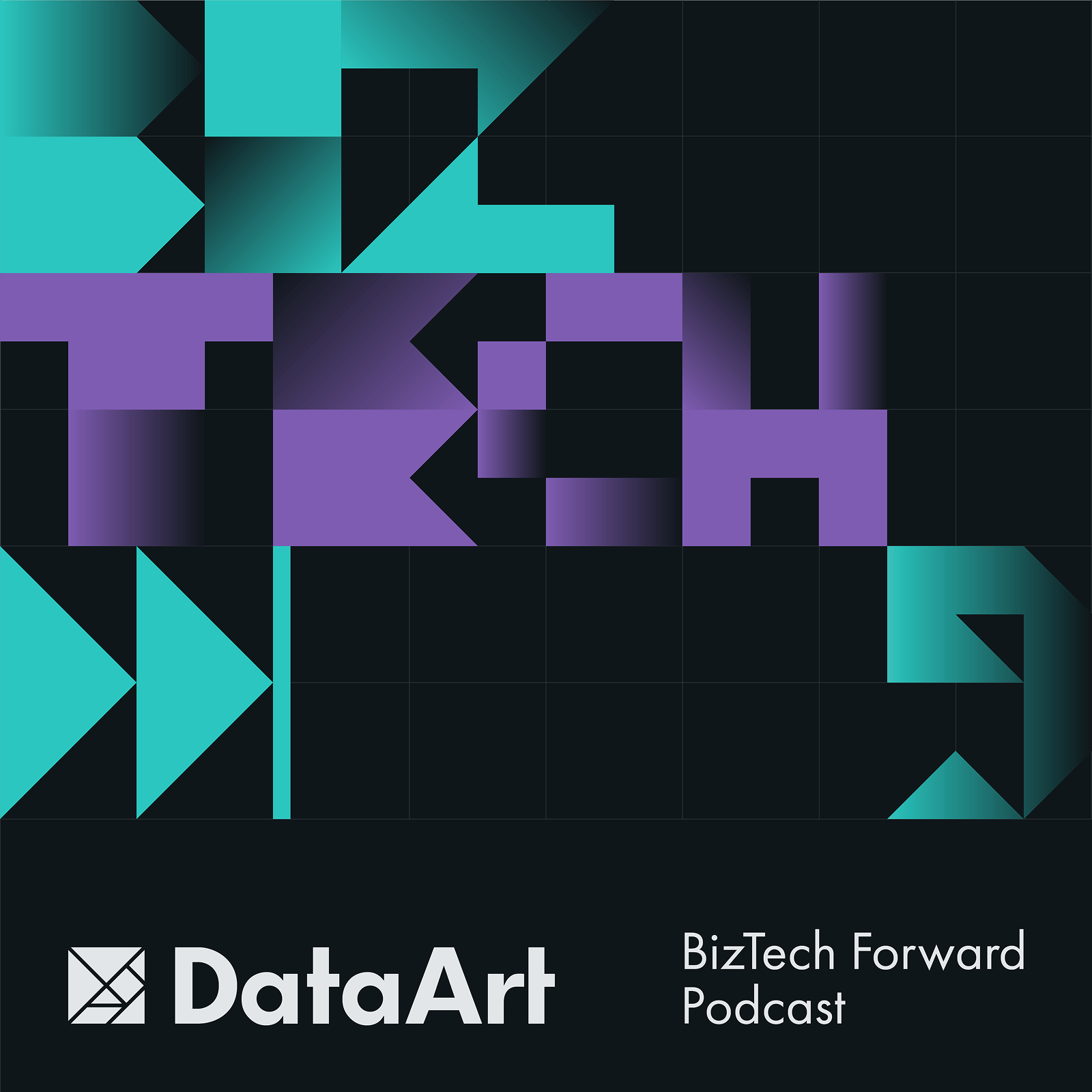
In this episode of BizTech Forward, Anni sits down with Mike Peterson, Advisory CTO / CIO, Mentor, and Coach, who discusses how client expectations from IT vendors have evolved over the past decade, what clients miss from the ‘old days,’ and how vendors can stay ahead in an ever-changing tech landscape.
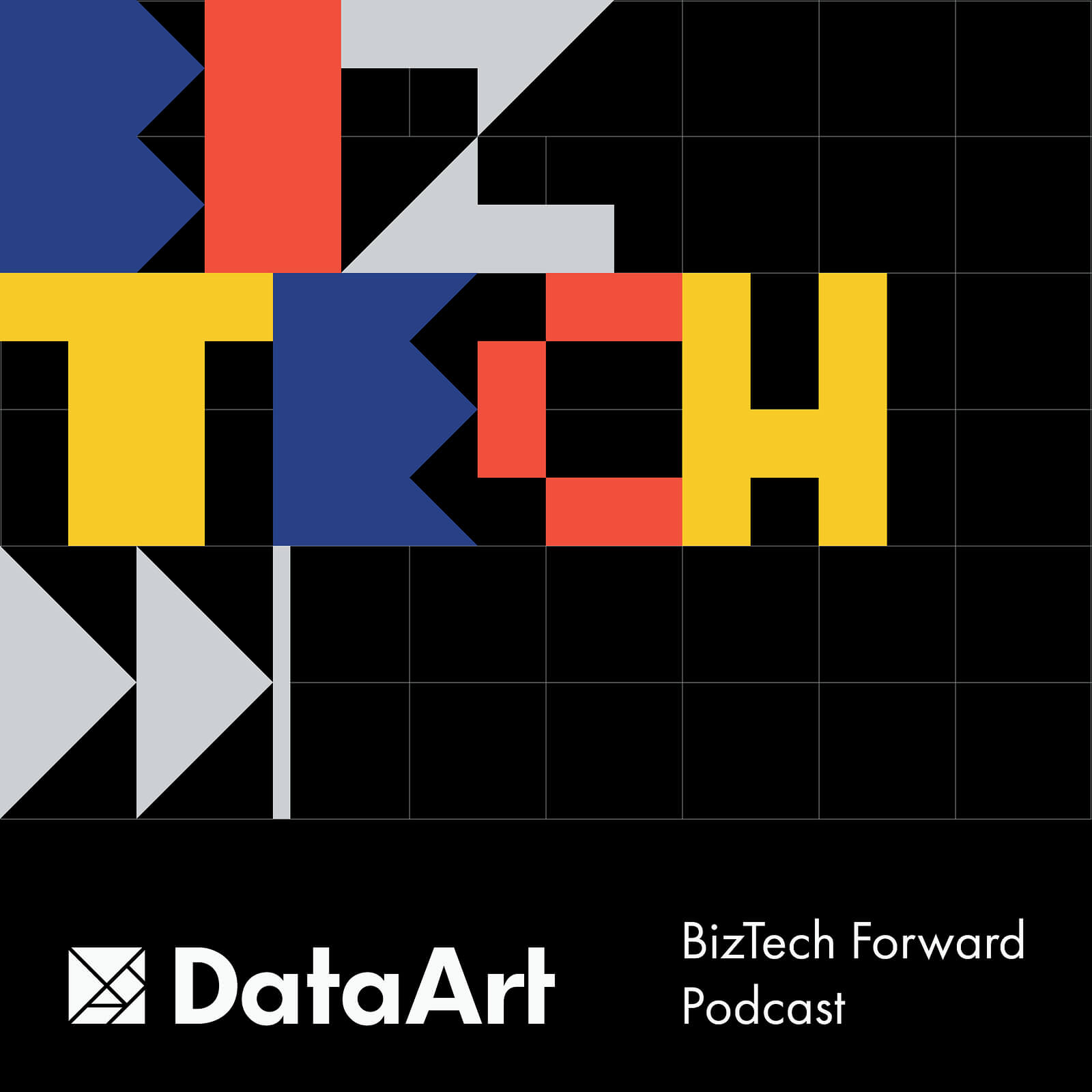
This is a bonus episode of BizTech Forward: Season One Recap. Host Anni takes you through the eight episodes of the debut season, highlighting some of the best moments and setting the stage for season two!
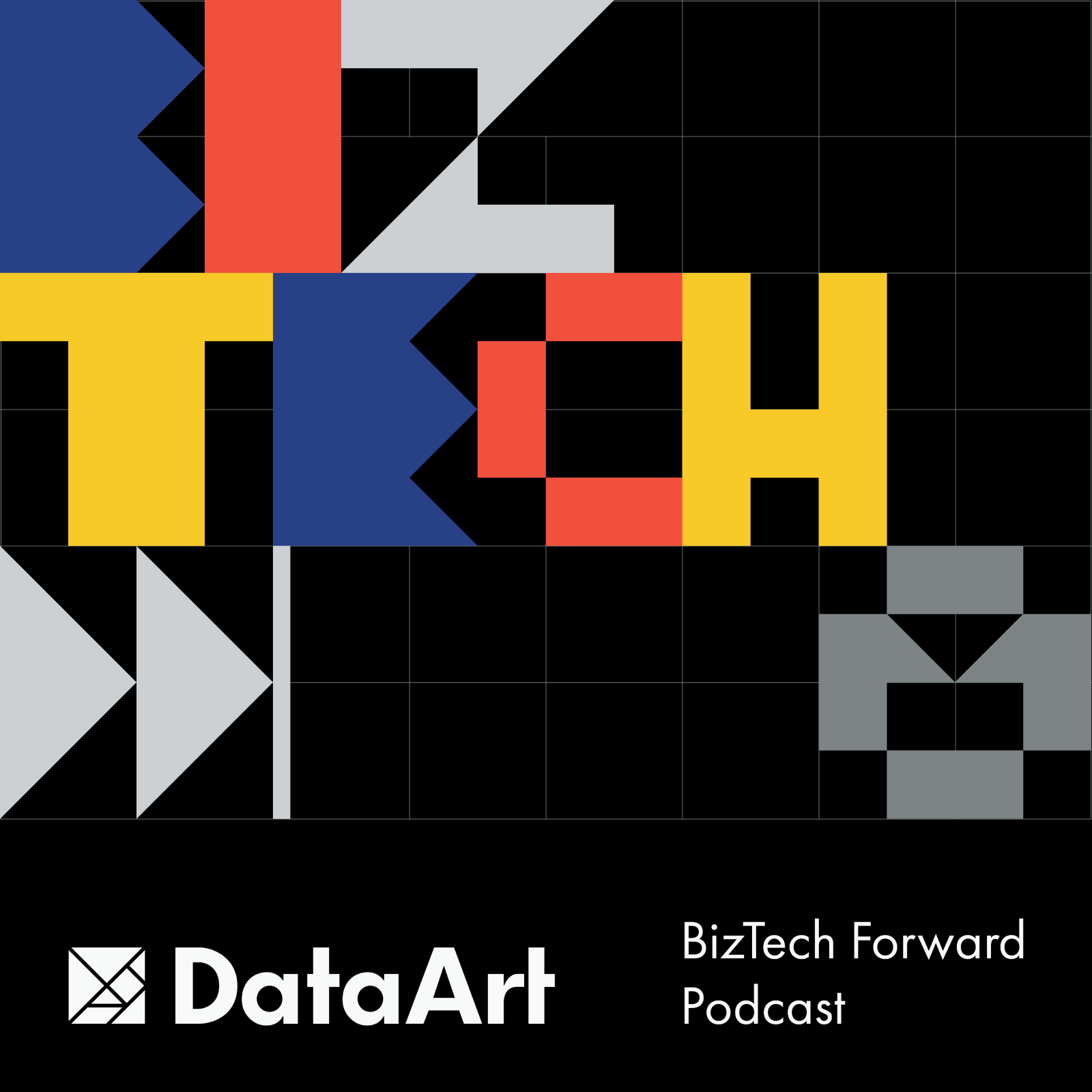
In this episode of BizTech Forward, Anni chats with Scott Rayburn, VP Marketing at DataArt, about how marketing has evolved with the rise of data and technology.
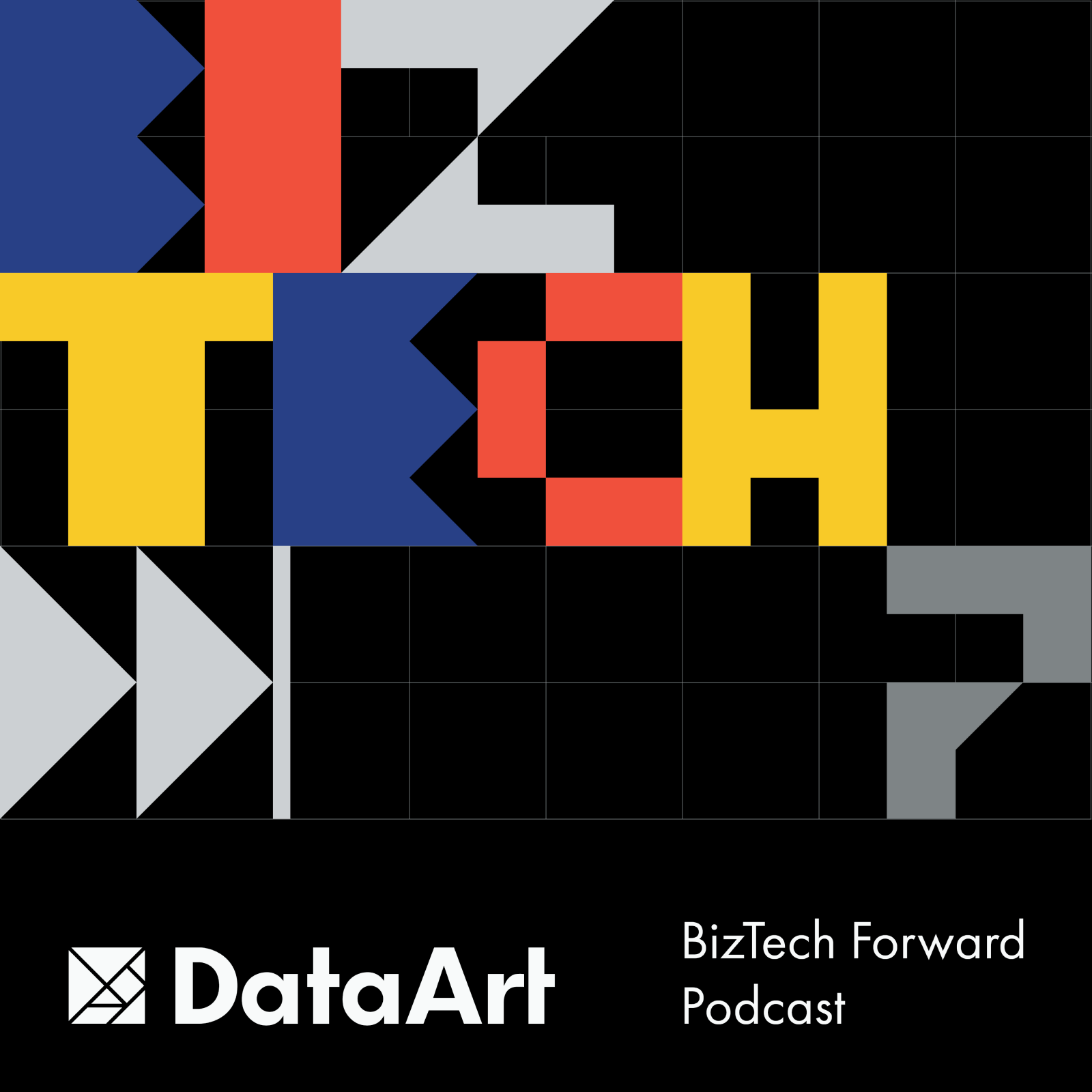
In this episode, Anni chats with Sheetal Kale, Head of DataArt India, about the country’s modern tech views, AI and data, IPO boom, and India’s gravitational pull in global decision-making.

In this episode of BizTech Forward, Anni sits down with Tim McMullen, DataArt's Head of Design Studio, to talk about the evolution of design processes in the world of UX.
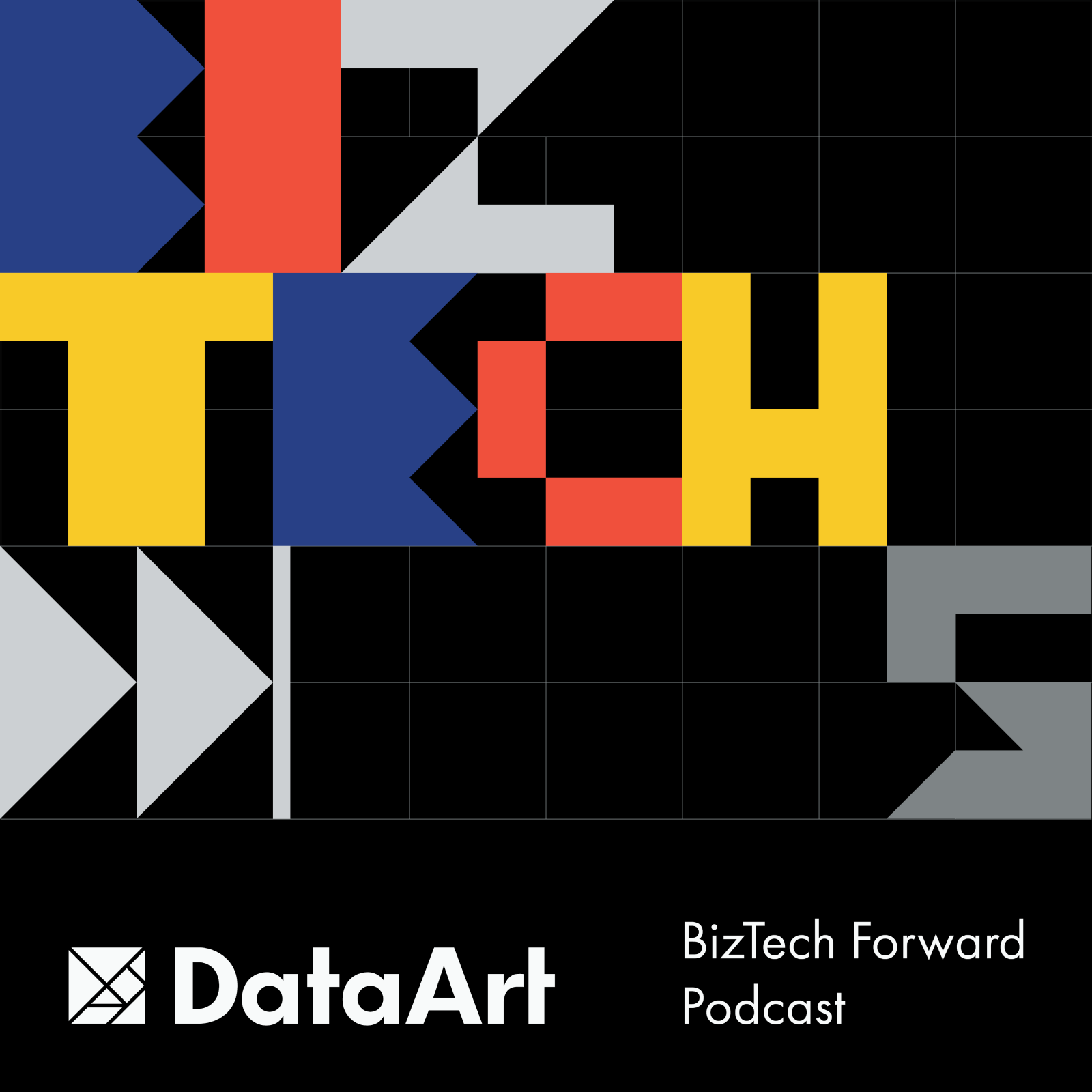
In this episode of BizTech Forward, Anni sits down with Tim McMullen, DataArt's Head of Design Studio, to talk about the evolution of design processes in the world of UX.
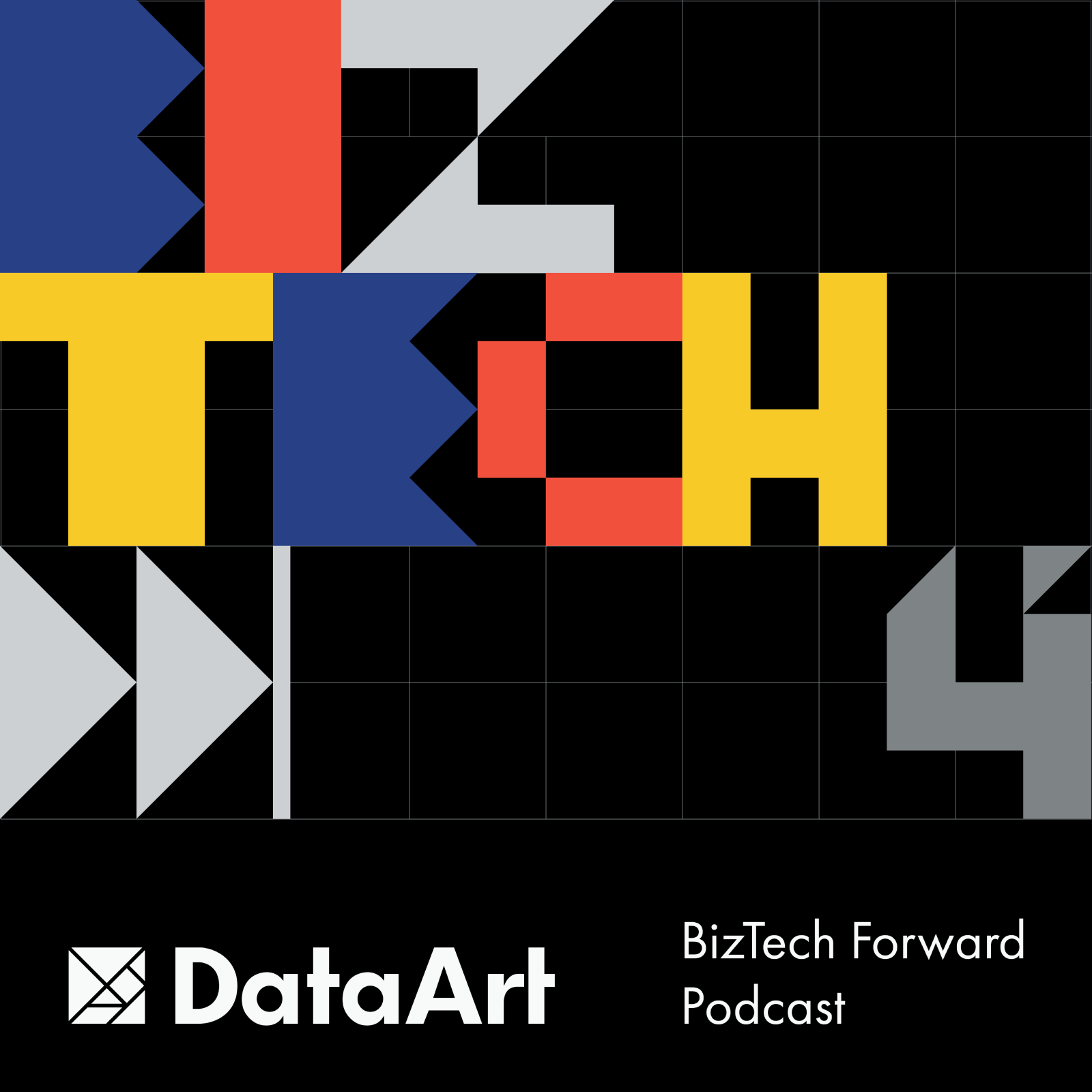
In this episode of BizTech Forward, we chat with Yuri Gubin, Chief Innovation Officer at DataArt, about why data quality is critical for AI success.
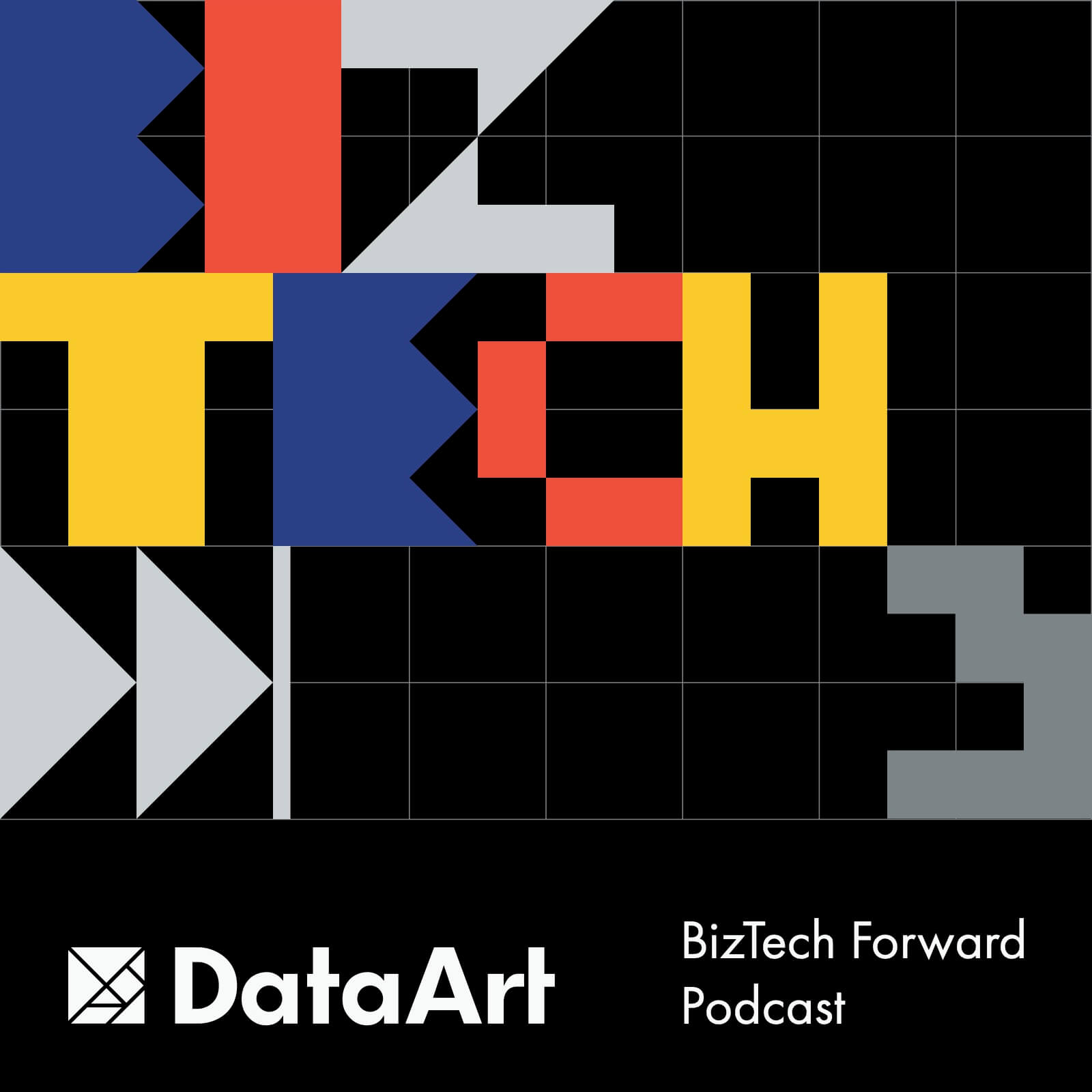
In this episode, we chat with Anna Velykoivanenko, Global Employer Branding Director at DataArt, about the perfect blend of technical know-how and human-centric skills.
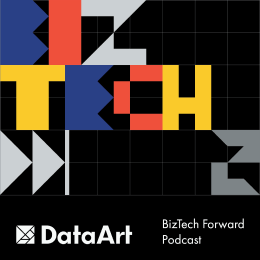
In this episode of BizTech Forward, Anni from DataArt’s Media Relations team chats with Alexei Miller, Managing Director at DataArt, about how businesses can truly measure the value of their IT investments.
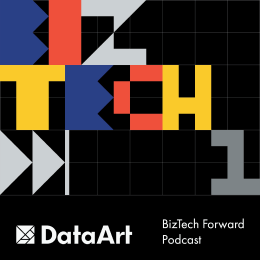
Join Anni Tabagua as we kick off our very first episode with a fascinating topic: AI in Automotive. Our guest is Dmitry Bagrov, the Managing Director of DataArt UK!
We Want to Hear From You!
Reach out to us with any comments, feedback, and questions by filling out the form.

Thank you for contacting us!
We will be in touch shortly to continue the conversation.








